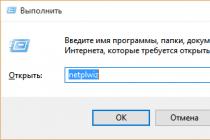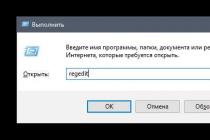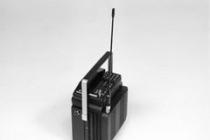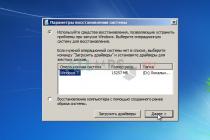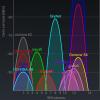STATE STANDARD OF THE UNION OF SSR
UNIFIED SYSTEM OF DESIGN DOCUMENTATION
SYMBOLS CONDITIONAL
GRAPHIC IN SCHEMES
SOURCES OF LIGHT
GOST 2.732-68
IPK PUBLISHING STANDARDS
Moscow
STATE STANDARD OF THE UNION OF SSR
|
Unified system for design documentation CONDITIONAL GRAPHIC DESIGNATIONS IN SCHEMES. Unified system for design documentation. |
GOST |
Date of introduction 01.01.71
2. Designations of elements of light sources are given in.
Table 1
|
Designation |
||
|
1. (Deleted, Amendment No. 2). |
||
|
2. Pressure |
||
|
a) low |
||
|
b) high |
||
|
c) ultra-high |
||
|
3. Pulsed radiation |
||
|
4. Gas filling: |
||
|
neon |
Ne |
|
|
xenon |
Xe |
|
|
sodium |
Na |
|
|
Mercury |
Hg |
|
|
iodine |
I |
|
|
5. Balloon a) with an inner reflective layer Note ... The position of the line within the balloon indicating the inner reflective layer is not established. |
|
|
|
b) with an external reflective layer |
|
|
|
6. Arc electrode |
|
|
(Modified edition, Amendments No. 1, 2).
3. Examples of construction of designations of light sources are given in.
Table 2
|
Designation |
||
|
1. Incandescent and signal lamp. General designation. Note... If it is necessary to indicate the color of the lamp, the following symbols may be used: C2 - red; C4 - yellow; C5 - green; C6 - blue; C9 - white |
|
|
|
1a. Flash light signaling lamp |
|
|
|
2. Incandescent lamp, two-strand: |
||
|
a) with three conclusions |
||
|
b) with four conclusions |
||
|
3. Discharge lighting and signal lamp. General designation: |
||
|
a) with two conclusions |
||
|
b) with four conclusions |
||
|
1. If necessary, it is allowed to designate lamps with a self-heating cathode as follows, for example: |
||
|
a) low pressure gas-discharge lamp with simple electrodes and a self-heating cathode |
||
|
b) high-pressure gas-discharge lamp with combined electrodes, preheated with self-heating cathodes |
||
|
2. It is allowed to depict gas-discharge lamps in an elongated cylinder, for example, a low-pressure gas-discharge lamp with combined electrodes and preheating |
|
|
|
7. Gas-discharge lamp with liquid cathode and external ignition |
||
|
8. Gas-discharge pulse lamp: |
|
|
|
a) low pressure with simple electrodes and external ignition |
||
|
b) high pressure with combined electrodes and internal ignition |
|
|
|
Note . (Deleted, Amendment No. 1). |
||
|
9. Gas discharge lamp, low pressure with combined electrodes, with preheating, ultraviolet radiation |
||
|
Note to pp. 3 - 9. Letters are used to indicate the type of gas-discharge lamps: |
||
|
11. Lamp with an inner reflective layer: |
||
|
a) low pressure gas discharge with combined electrodes |
||
|
b) incandescence |
||
|
12. Arc lamp: |
|
|
|
a) the electrodes are coaxial |
||
|
b) the electrodes are located at an angle |
|
|
|
13. Indication device electroluminescent unswitched |
||
|
14. Display device electroluminescent switched: |
||
|
a) with one-way control |
||
|
b) with two-way control |
||
|
15. Starter for discharge lamps |
(Modified edition, Amendments No. 1, 3).
4. Dimensions of the conventional graphic designation of the incandescent lamp

(Introduced additionally, Amendment No. 1).
INFORMATION DATA
1. DEVELOPED AND INTRODUCED by the Committee of standards, measures and measuring instruments at the Council of Ministers of the USSR.
DEVELOPERS
V.R. Verchenko, Yu.I. Stepanov, E.G. Old-timer,B.C. Murashov, G.G. Gevorkyan, L.S. Krupalnik, G.N. Granatovich, V.A. Smirnova, E.V. Purizhinskaya, Yu.B. Karlinsky, V.G. Chertkova, G.S. Plis, Yu.P. Leichik.
2. APPROVED AND PUT INTO EFFECT by the Resolution of the Committee of Standards, Measures and Measuring Instruments under the Council of Ministers of the USSR dated 14.08.68, No. 1296.
3. REPLACE GOST 7624-62 in part of Sec. 12, sec. J.
4. REFERENCE REGULATORY AND TECHNICAL DOCUMENTS
5. REPUBLICATION (December 1997) with Amendments No. 1, 2, 3, approved in December 1980, April 1987, March 1994 (IUS 3-81, 7-87, 5-94).
Reading diagrams is impossible without knowledge of conventional graphic and letter designations of elements. Most of them are standardized and described in regulatory documents. Most of them were published in the last century, and only one new standard was adopted, in 2011 (GOST 2-702-2011 ESKD. Rules for the implementation of electrical circuits), so sometimes a new element base is designated according to the principle "how who came up with it." And this is the difficulty of reading the diagrams of new devices. But mainly the conventions in electrical diagrams are described and are well known to many.
On the diagrams, two types of designations are often used: graphic and letter, denominations are also often affixed. From this data, many can immediately tell how the circuit works. This skill develops over years of practice, but first you need to understand and remember the symbols in electrical circuits. Then, knowing the work of each element, you can imagine the end result of the device.
For composing and reading different schemes usually different items are required. There are many types of circuits, but in electrics they are usually used:

There are many other types of electrical circuits, but they are not used in home practice. An exception is the route of the passage of cables through the site, the supply of electricity to the house. This type of document will definitely be needed and useful, but it is more of a plan than a diagram.
Basic images and functional signs
Switching devices (switches, contactors, etc.) are based on contacts of different mechanics. There are make, break, changeover contacts. The closing contact in the normal state is open; when it is put into the operating state, the circuit is closed. The normally open contact is closed, and under certain conditions it is triggered to open the circuit.

The changeover contact is available with two or three positions. In the first case, one circuit works, then another. The second has a neutral position.
In addition, contacts can perform different functions: contactor, disconnector, circuit breaker, etc. All of them also have a conventional designation and are applied to the corresponding contacts. There are functions that only moving contacts perform. They are shown in the photo below.

Basic functions can only be performed by fixed contacts.

Single-line diagram symbols
As already mentioned, only the power part is indicated on single-line diagrams: RCDs, automatic machines, difavtomats, sockets, switches, switches, etc. and connections between them. The designations of these conventional elements can be used in the diagrams of electrical panels.
The main feature of graphic symbols in electrical circuits is that devices that are similar in principle of operation differ in some trifle. For example, an automatic device (circuit breaker) and a circuit breaker differ only in two small details - the presence / absence of a rectangle on the contact and the shape of the icon on a fixed contact, which display the functions of these contacts. The contactor differs from the designation of the circuit breaker only in the shape of the icon on the fixed contact. Very little difference, but the device and its functions are different. All these little things must be looked at and memorized.

There is also a small difference between the symbols of the RCD and the differential machine. It is also only in the functions of movable and fixed contacts.
Roughly the same is the case with the coils of relays and contactors. They look like a rectangle with small graphic additions.

In this case, it is easier to remember, since there are rather serious differences in appearance additional icons. It's so simple with a photo relay - the rays of the sun are associated with arrows. The impulse relay is also quite easy to distinguish by the characteristic shape of the sign.

A bit easier with bulbs and connections. They have different "pictures". A detachable connection (such as a socket / plug or a socket / plug) looks like two brackets, and a collapsible one (like a terminal block) looks like circles. Moreover, the number of pairs of checkmarks or circles indicates the number of wires.
Image of tires and wires
In any scheme, connections befits and for the most part they are made with wires. Some connections are buses - more powerful conductive elements from which taps can extend. Wires are indicated by a thin line and branch / connection locations are indicated by dots. If there are no points, this is not a connection, but an intersection (no electrical connection).

There is separate images for buses, but they are used if you need to graphically separate them from communication lines, wires and cables.

On wiring diagrams, it is often necessary to indicate not only how the cable or wire passes, but also its characteristics or method of laying. All this is also displayed graphically. This is also necessary information to read the drawings.
How are switches, switches, sockets depicted
Certain types of this equipment do not have images approved by standards. So, dimmers (dimmers) and push-button switches remained without designation.
But all other types of switches have their own symbols in the electrical circuits. They come in open and hidden installations, respectively, there are also two groups of icons. The difference is the position of the line on the image of the key. In order to understand in the diagram what type of switch is meant, this must be remembered.
There are separate designations for two-button and three-button switches. In the documentation, they are called "double" and "triple", respectively. There are differences for enclosures with different degrees of protection. In rooms with normal operating conditions, switches with IP20 are installed, maybe up to IP23. In humid rooms (bathroom, swimming pool) or outdoors, the degree of protection must be at least IP44. Their images differ in that the circles are filled. So it's easy to tell them apart.

There are separate images for the switches. These are switches that allow you to control the on / off of light from two points (there are also three, but without standard images).
The same trend is observed in the designation of outlets and outlet groups: there are single, double sockets, there are groups of several pieces. Products for rooms with normal operating conditions (IP 20 to 23) have an unpainted center, for wet rooms with a high-protection enclosure (IP44 and higher), the center is tinted with a dark color.

Symbols in electrical circuits: sockets different types installation (open, hidden)
Having understood the logic of the designation and remembering some initial data (what is the difference between the conventional image of the socket of an open and hidden installation, for example), after a while you will be confidently able to navigate in the drawings and diagrams.
Lamps on the diagrams
This section describes the conventions in the electrical diagrams of various lamps and luminaires. Here the situation with the designations of the new element base is better: there are even signs for LED lamps and lamps, compact fluorescent lamps(housekeepers). It is also good that the images of lamps of different types differ significantly - it is difficult to confuse them. For example, lamps with incandescent lamps are depicted in the form of a circle, with long linear fluorescent lamps - a long narrow rectangle. The difference in the image of a linear fluorescent lamp and an LED one is not very big - only dashes at the ends - but here you can remember.

The standard even contains symbols in electrical diagrams for a ceiling and pendant lamp (holder). They also have a rather unusual shape - small-diameter circles with dashes. In general, this section is easier to navigate than others.
Elements of basic electrical circuits
The schematic diagrams of the devices contain a different element base. Communication lines, terminals, connectors, light bulbs are also depicted, but, in addition, there are a large number of radioelements: resistors, capacitors, fuses, diodes, thyristors, LEDs. Most of the symbols in the electrical circuits of this element base are shown in the figures below.


More rare ones will have to be looked for separately. But most circuits contain these elements.
Letter symbols in electrical diagrams
In addition to graphic images, elements on the diagrams are signed. It also helps to read the diagrams. Near letter designation element is often its serial number. This is done so that later it would be easy to find the type and parameters in the specification.

The table above shows international designations. There is also a domestic standard - GOST 7624-55. Excerpts from there with the table below.

If you have ever thought about design renovation, then you were probably notified that engineering plans of the premises will be created. In this technical documentation, the designations LED lamps in the drawings according to GOST it is carried out in accordance with existing standards and norms, however, a person who does not have technical education will not be able to understand such a "map".
In fact, there is nothing complicated in this process, but you just need to find a list of symbols that are used today. Of course, the documentation and the GOST format are revised from time to time, but it does not change dramatically, it is only supplemented.
The relevance of the use of drawings
When planning a repair, creating a drawing with designations of lamps in accordance with GOST seems to many customers a waste Money and time, since construction work can be performed without this document. Of course, in the past, everything was exactly like that, but over time, the situation is gradually changing.
The increasing complexity of infrastructure is becoming a major challenge. Today builders and craftsmen are forced to hide vast amounts of wires, cables and wiring in walls and floors to power all the electronics they use. In the drawings in accordance with GOST, each wire and other elements are indicated, so that, if necessary, additional work do not damage anything important. You need to know the designation of the lamps in order to be able to read such plans.
Moreover, the use of signs for the designation of a lamp or a chandelier allows you to significantly speed up the work, since the foreman does not need to make any decision on the placement of lighting devices - everything was decided in advance by a specialized specialist. In this case, the chance of error is significantly reduced, which prevents unnecessary financial losses.

It should be understood that on t The territory of each country has its own separate GOST, even for the countries of the former USSR and the CIS. For this reason, it is impossible to download the first available list of projects with markings from the Internet and use it - the builder may simply not understand it. Nevertheless, a single list of signs and symbols is often used, but the requirements differ in the design rules and other similar trifles.
How to "read" the lighting scheme according to GOST?
So, if you decide to understand the technical documentation presented to you, then you should make sure that a number of important points are being followed. First of all, it is worth remembering that all sizes according to GOST are indicated in millimeters, which at first frightens many people who have not encountered such a system.
Moreover, if you do not have the necessary experience, then you should know the approximate layout of the premises. If this is your house, room or dwelling, then you shouldn't have any problems with this. Otherwise, it is recommended to try to find photographs in order to have an association. It is extremely difficult to imagine the design of the future premises according to only one plan.
As mentioned earlier, there are really a lot of indoor lighting conventions - there are Special symbols even for certain types of lighting fixtures, making it difficult to read. On the territory of the Russian Federation, the symbols of lamps are often used, which are presented in the following illustration.

If a designer or designer wishes to use alternative designations, then they are indicated in a special reference section, which is usually presented on the last pages of the plan or in the appendix.
- Find legend;
- Combine the plan with the location of the room in space;
- Try to visually represent the room and the placement of the fixtures.
In general, planning in accordance with GOST was created in such a way that everyone could understand this process. Be sure that soon you will be able to understand the presented drawing, and, if necessary, make the required changes.
Any electrical circuits can be presented in the form of drawings (schematic and wiring diagrams), the design of which must comply with ESKD standards. These standards apply to both wiring or power circuits and electronic devices. Accordingly, in order to "read" such documents, it is necessary to understand the symbols in the electrical circuits.
Regulations
Given the large number of electrical elements, for their alphanumeric (hereinafter BO) and conventionally graphic designations (UGO), a number of regulatory documents have been developed to exclude discrepancy. Below is a table showing the main standards.
Table 1. Standards for the graphic designation of individual elements in installation and circuit diagrams.
| GOST number | Short description |
| 2.710 81 | This document contains the requirements of GOST for BO different types electrical elements, including electrical appliances. |
| 2.747 68 | Requirements for the size of displaying elements in graphical form. |
| 21.614 88 | Accepted standards for electrical plans and wiring. |
| 2.755 87 | Display on diagrams of switching devices and contact connections |
| 2.756 76 | Standards for sensing parts of electromechanical equipment. |
| 2.709 89 | This standard regulates the standards according to which the contact connections and wires are indicated on the diagrams. |
| 21.404 85 | Schematic symbols for equipment used in automation systems |
It should be borne in mind that the element base changes over time, accordingly, changes are made to the regulatory documents, although this process is more inert. Let's give a simple example, RCDs and difavtomats have been widely used in Russia for more than a decade, but there is still no single standard for these devices in accordance with GOST 2.755-87, in contrast to circuit breakers... It is quite possible that this issue will be settled in the near future. To keep abreast of such innovations, professionals track changes in regulatory documents, amateurs do not need to do this, it is enough to know the decoding of the main designations.
Types of electrical circuits
In accordance with the norms of ESKD, diagrams mean graphic documents on which, using the accepted designations, the main elements or units of the structure are displayed, as well as the links that unite them. According to the accepted classification, ten types of circuits are distinguished, of which three are most often used in electrical engineering:
If the diagram shows only the power part of the installation, then it is called single-line, if all the elements are shown, then it is complete.


If the drawing shows the wiring of the apartment, then the locations of the lighting fixtures, sockets and other equipment are indicated on the plan. Sometimes you can hear how such a document is called a power supply scheme, this is incorrect, since the latter reflects the way consumers are connected to a substation or other power source.
Having dealt with the electrical circuits, we can proceed to the designations of the elements indicated on them.
Graphic symbols
Each type of graphic document has its own designations, regulated by the relevant regulatory documents. Let's give as an example the main graphic symbols for different types of electrical circuits.
Examples of UGO in functional diagrams
Below is a figure depicting the main nodes of automation systems.
 Examples of symbols for electrical appliances and automation equipment in accordance with GOST 21.404-85
Examples of symbols for electrical appliances and automation equipment in accordance with GOST 21.404-85 Description of designations:
- A - Basic (1) and allowed (2) images of devices that are installed outside the electrical panel or junction box.
- B - The same as point A, except that the elements are located on the console or electrical panel.
- С - Display of executive mechanisms (MI).
- D - Influence of IM on the regulatory body (hereinafter RO) when the power is turned off:
- Opening of RO takes place
- Closing RO
- The position of the RO remains unchanged.
- E - IM, on which a manual drive is additionally installed. This symbol can be used for any position of the RO specified in clause D.
- F- Received communication lines display:
- General.
- There is no connection when crossing.
- The presence of a connection at the intersection.
UGO in single-line and complete wiring diagrams
There are several groups of symbols for these schemes, we will give the most common ones. To receive complete information it is necessary to refer to the regulatory documents, the numbers of state standards will be given for each group.
Power supplies.
For their designation, the symbols shown in the figure below are adopted.
 UGO power supplies on schematic diagrams (GOST 2.742-68 and GOST 2.750.68)
UGO power supplies on schematic diagrams (GOST 2.742-68 and GOST 2.750.68) Description of designations:
- A - source with constant voltage, its polarity is indicated by the symbols "+" and "-".
- V is the electricity icon representing alternating voltage.
- C - the symbol for alternating and direct voltage, used in cases where the device can be powered from any of these sources.
- D - Display battery or galvanic power supply.
- E- Symbol for a multi-cell battery.
Communication lines
The basic elements of electrical connectors are shown below.
 Designation of communication lines on schematic diagrams (GOST 2.721-74 and GOST 2.751.73)
Designation of communication lines on schematic diagrams (GOST 2.721-74 and GOST 2.751.73) Description of designations:
- A - General display adopted for various types of electrical connections.
- B - Current-carrying or grounding bus.
- C - Designation of shielding, can be electrostatic (marked with the symbol "E") or electromagnetic ("M").
- D - Grounding symbol.
- E - Electrical connection with the device body.
- F - On complex diagrams, from several component parts, a break in communication is thus indicated, in such cases "X" is information about where the line will be extended (as a rule, the element number is indicated).
- G - Intersection with no connection.
- H - Connection at the intersection.
- I - Branches.
Designations of electromechanical devices and contact connections
Examples of designation of magnetic starters, relays, as well as contacts of communication devices can be found below.
 UGO, adopted for electromechanical devices and contactors (GOST 2.756-76, 2.755-74, 2.755-87)
UGO, adopted for electromechanical devices and contactors (GOST 2.756-76, 2.755-74, 2.755-87) Description of designations:
- A - symbol of the coil of an electromechanical device (relay, magnetic starter, etc.).
- B - UGO of the receiving part of the electrical thermal protection.
- С - display of the coil of the device with mechanical interlock.
- D - contacts of switching devices:
- Closing.
- Openers.
- Switching.
- E - Symbol for designation of manual switches (buttons).
- F - Group switch (switch).
UGO electric machines
Here are some examples of displaying electrical machines (hereinafter EM) in accordance with the current standard.
 Designation of electric motors and generators on schematic diagrams (GOST 2.722-68)
Designation of electric motors and generators on schematic diagrams (GOST 2.722-68) Description of designations:
- A - three-phase EM:
- Asynchronous (short-circuited rotor).
- Same as point 1, only in two-speed version.
- Asynchronous EMs with phase rotor design.
- Synchronous motors and generators.
- B - Collector, DC powered:
- EM with permanent magnet excitation.
- EM with an excitation coil.

UGO transformers and chokes
Examples of graphical symbols for these devices can be found in the figure below.
 Correct designation of transformers, inductors and chokes (GOST 2.723-78)
Correct designation of transformers, inductors and chokes (GOST 2.723-78) Description of designations:
- A - This graphic symbol can indicate inductors or transformer windings.
- B - Choke, which has a ferrimagnetic core (magnetic circuit).
- C - Display of a two-coil transformer.
- D - Device with three coils.
- E - Autotransformer symbol.
- F - Graphical display TT (current transformer).
Designation of measuring devices and radio components
A quick overview of UGO data electronic components shown below. For those who want to become more familiar with this information, we recommend that you look through GOSTs 2.729 68 and 2.730 73.
 Examples of conventional graphic symbols for electronic components and measuring instruments
Examples of conventional graphic symbols for electronic components and measuring instruments Description of designations:
- Electricity meter.
- Image of an ammeter.
- Mains voltage measuring device.
- Thermal sensor.
- Constant value resistor.
- Variable resistor.
- Condenser (general designation).
- Electrolytic capacity.
- Diode designation.
- Light-emitting diode.
- Image of a diode optocoupler.
- UGO transistor (in this case npn).
- Fuse designation.
UGO lighting fixtures
Consider how on schematic diagram electric lamps are displayed.

Description of designations:
- A - General image of incandescent lamps (LN).
- B - LN as a signaling device.
- C - Type designation of discharge lamps.
- D - High pressure gas-discharge light source (the figure shows an example of a design with two electrodes)
Designation of elements in the wiring diagram
Completing the topic of graphic symbols, we give examples of the display of sockets and switches.

As depicted, sockets of other types are easy to find in the regulatory documents that are available on the network.
















